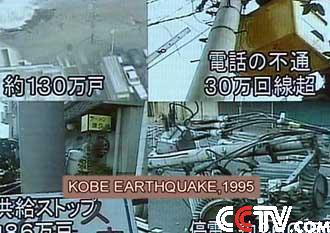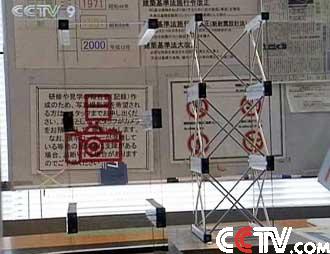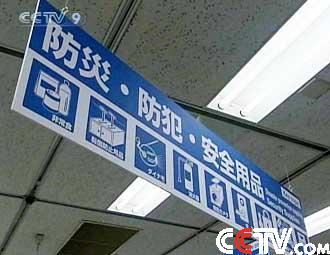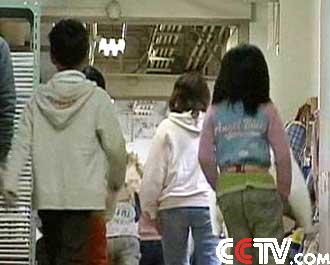Source: CCTV.com
04-13-2007 14:55
 |
The Kobe earthquake of 1995 killed over sixty-four hundred people. And economic losses reached nearly nine thousand billion US dollars.
The seven-point-two magnitude quake was the biggest natural disaster to strike Japan since World War Two.
In 2002, the Japanese government established the Earthquake Memorial Center-Disaster Reduction and Human Renovation Institution to mark the quake.
Over the past five years, the RDI has received nearly two-and-a-half million visitors from around the world.
Head of DRI said, "Nowadays, young people know little about natural disasters. They come here to watch and experience these quakes themselves. They will feel disasters have something important to do with them. Maybe some day in the future, they'll find themselves caught in one."
 |
Many Japanese pay attention to emergency preparedness after the quakes in 1923 and 1995.
"We just now buy some quake emergency products such as solid food and brackets, water and flashlights," said a Japanese citizen.
In recent years, such products have been selling well.
A salesman said, "Before, it was mainly old people who bought the supplies. Now it's different. More and more young people come to buy them."
The Japan Meteorological Agency has built more than 12-hundred seismic stations across the country. They measure the two kinds of waves produced by quakes--the faster primary, or P-waves and the slower secondary, or S-waves.
 |
Board chairman of Fuji Company said, "For example, if a tsunami can be predicted, people can dodge the disaster. If not, losses will be very very huge."
Japan learned many painful lessons from the disaster. As Tokyo and other cities expect even bigger quakes, the country has developed the world's most ambitious, and certainly most expensive, quake preparedness techniques.
 |
It has reinforced hundreds of thousands of buildings to top seismic standards, and spent billions on creating a nationwide early-warning system.
In tomorrow's episode, we'll look at environmental protection in Japan.
Editor:Liu Fang
